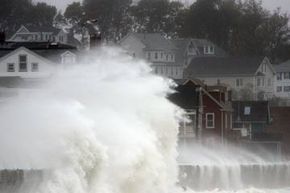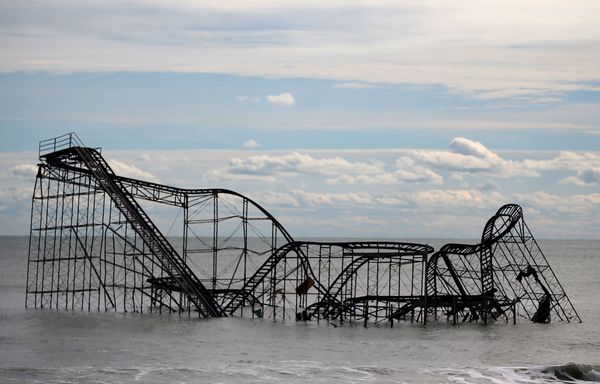Every year, a slew of tropical cyclones (many of which evolve into full-fledged hurricanes) receive new monikers from the National Oceanic and Atmospheric Administration's National Hurricane Center. Six lists of hurricane names are rotated and approved by the World Meteorological Organization.
The organization, headquartered in Geneva, Switzerland, relies on an international voting committee to retire the names of particularly devastating storms, such as Hurricane Katrina in 2005, and appoint new names to replace them [source: World Meteorological Association].
But don't expect the same name recognition to be given to nor'easters. Although the Weather Channel's weather forecasters began calling a major nor'easter that erupted on the heels of Hurricane Sandy "Athena," few others followed suit.
In fact, the National Weather Service refused to recognize the storm's name and ordered its staff not to use the term in its coverage. Many media, including the Associated Press, didn't name the storm in their coverage, either [source: Sistek].
Despite the confusion about whether a private U.S.-based entity (the Weather Channel) should be naming storms without the buy-in of a global weather community, one thing's for certain: Even without a name, a such a storm can cause severe economic and human damage to the affected regions.
Take the Great Blizzard of March 1888, for example. Ushered in by a powerful nor'easter, this notorious blizzard settled over New York, New Jersey, Massachusetts and Connecticut for two days, and dropped up to 50 inches (127 centimeters) of snow.
The unseasonably late storm literally buried about half of its 400 victims in snowdrifts that piled up between downtown buildings. It snapped telegraph poles. It shut down rail lines and trapped passengers in rail cars for days.
And in the months that followed, the storm produced something else, too. It prompted New York City's officials to design and build an extensive subway system. It also led to buried telegraph and electrical lines [source: Burt].
Although the Great Blizzard of 1888 is still part of the Eastern United States' weather-disaster lexicon, there have been at least a dozen other notable nor'easters since that storm made its snowy mark on history. These include the Ash Wednesday Storm of 1962, the New England Blizzard of 1978 and the Perfect Storm of 1991. (A movie was made about the latter in 2000.)
And, with as many as 40 nor'easters expected to fire annually, odds are the Atlantic coast will see another big one in the not-too-distant future.

